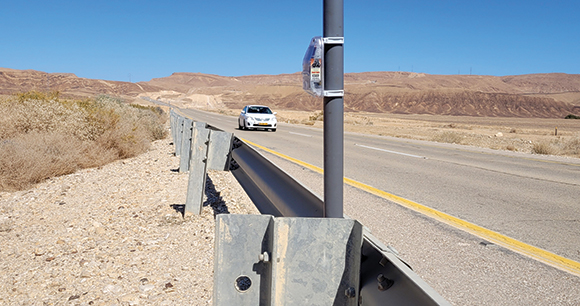by Bill Clark, PhD
Hard facts: According to the National Park Service, 2 million large wild animals are struck by vehicles on America’s roads every year. About 440 people are killed in these collisions, as well, and another 59,000 injured. The annual price tag runs about $10 billion. Each incident is a needless, preventable tragedy. What’s more, the wildlife kills are certainly undercounted, as not all collisions are reported (and the statistics don’t even include the vast numbers of smaller animals such as rabbits and squirrels, who are merely crushed and left behind). Vehicle collisions are also a major cause of untimely death for several endangered species, including the Florida panther and Key deer. Despite many efforts to reduce this carnage, the numbers seem to get worse nearly every year.

But perhaps some hope, or even progress, might be found in a promising field exercise being conducted cooperatively by the Israel Nature and Parks Authority (INPA), Netivei Israel (National Roads Authority) and iPTE Traffic Solutions, an Austrian startup that has created an “acoustic curtain” device to help keep wildlife off roadways when vehicles pass.
Ranger Tomer Ofri of the INPA provided the motivation to get the project started and the leadership to see it through. Dr. Dotan Rotem, an INPA landscape ecologist, is also a key figure on the team. According to Rotem, the project team is about halfway through a three-year exercise testing the iPTE device. Currently, 40 of them are mounted on meter-high posts positioned along a one-kilometer section of an Israeli road that had been notorious for its frequency of wildlife kills.
An iPTE device, Rotem explained, is activated by the headlights of an oncoming vehicle, which then triggers an alarm. The devices are positioned to activate in sequence as a vehicle approaches, creating a curtain of sound that prompts wild animals to back away from the road. Once the vehicle passes and the lights are gone, the devices fall silent, and the animals can safely cross.
The technology is cost-effective—about $115 per device, installed. The high-impact polycarbonate, solar-powered devices require virtually no maintenance, short of the occasional cleaning of solar panels after a Middle East dust storm. The devices tested in Israel are operating at a human-audible 4 kHz, but they can be adjusted to frequencies beyond human hearing range when located near communities.

Data are still being gathered, but so far, test results have been promising. Over the past year and a half, there were only two wildlife collision fatalities along the road being tested. During that time, 11 kills were documented over an equivalent kilometer-long stretch of the same road that lacked the devices.
INPA Director General Raya Shukri agrees: “The Acoustic Curtain project serves as another vital pillar in protecting Israel’s wild animals,” she said. “The road agency’s involvement and commitment highlight the importance of collaboration between infrastructure agencies and the INPA to preserve local natural values.”
Dr. Bill Clark is a scientist, author, and pilot with a long and colorful career in wildlife conservation. A profile of Bill, focusing on his anti-poaching work with the Kenya Wildlife Service, appeared in the fall 2018 AWI Quarterly.